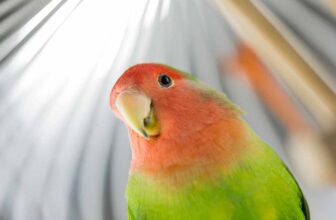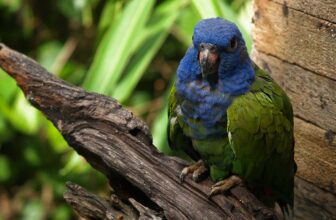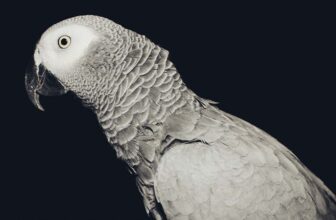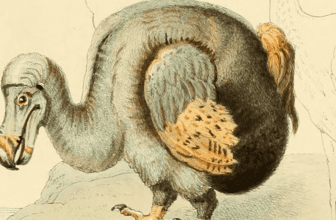The Great Potoo bird, scientifically known as Nyctibius
The Great Potoo is the biggest among all birds in the Potoo species, and they are also the largest among the nightjars and other related birds. So, if you are looking for a bird like
The color and pattern of this bird are such that it resembles the stump of a tree. Therefore, during the day-time, this bird perches itself on a branch that is about 10 to 12m above the ground, without anyone noticing it. During the night, it lowers itself to a branch that is around 1.5 to 2m above the ground, pounces carefully on its prey and returns to the same branch after its hunting.
the exotic Great Potoo Bird
Personality traits of the Great Potoo Bird
Two trademark features stand out in the personality of the Great Potoo. The first is the huge, round eyes of the bird. These birds have very large eyes with a yellow or orange iris. During the day-time, their physical appearance is easily camouflaged by the surroundings; however, during the night times, it is the reflection of light from their iris that makes it possible to spot these birds. The Great Potoo is very secretive and mysterious; it loves to remain hidden in the forest areas that are not disturbed too much.
Potoo bird call
The second feature that stands out in the personality of this bird is its unique growling or moaning sound that it gives out all through the night. These nocturnal sounds are quite disturbing and unsettling for other living beings in the Neotropical forests.
Though the head and eyes of the Great Potoo are very big, its beak is short and broad. The tail is very long. Sometimes, during the day, you can spot the bird perched on a high branch, with its beak pointed towards the sky and its tail stretching far below the branch. The tail color matches the color of the rest of the body of the bird. You will notice many white stripes throughout the long tail of the Great Potoo.
Credit: EatLiver
The great Potoo bird location
The range of this bird is quite huge, they are found in the humid and semi-humid forests of Central and South America in large numbers. Therefore, you will spot many differently colored Great Potoo birds in these geographical locations. Mostly the feathers of this bird are in shades of grey, black, burgundy and white.
This bird is classified as “uncommon” as not many birds are spotted by wildlife enthusiasts during their jungle expeditions. The bird loves a secluded lifestyle, and it doesn’t make any noise while it is perched on the branch during the nights while it awaits its prey. When it is disturbed during the night, it lets out a loud bark, whereas when it disturbed during the day, it shuts its eyes and compresses the feathers around its head so that it forms a perfect camouflage within its ambiance.
Potoo bird as pet
When they are raised in captivity, they are quite shy and mysterious, but when they are raised as pets, they are very playful and mischievous — these birds exhibit completely different personalities when they are domesticated. They usually feed on bugs and beetles, but sometimes they also feed on bats as well.
The loud, moaning sound that they make, potoo bird call, is full of melancholy, due to which the Great Potoo birds have also been nicknamed as “poor-me-ones.” During the daytime, apart from taking maximum advantage of their camouflage, these birds also strike their famous “freeze” pose. This is a pose in which they hold their heads straight, their beaks pointed upwards and their eyes closed. This makes them gel well with the surroundings and also ensures that they remain hidden – just the way they like it.
Baby potoo bird
Credit: TrekNature
The baby Potoo bird takes remains in the nest for about two months; however, it learns the freeze pose very quickly from its parents. When they are young, these birds resemble a bunch of cute, white feathers. Therefore, when they stand straight in the freeze position, they look more like tree-fungus than birds. This way, they save themselves from their predators.
Top 9 Interesting Potoo Bird facts:
Here are some interesting and exciting potoo bird facts that you should be aware of. You may already be aware of some of these facts, but a few facts are surely going to surprise you:
1. Exotic Great Potoo Bird Relation to spookiness
We already told you that the Great Potoo is not a very pleasant-looking bird. With its huge head, large eyes and bright-colored iris, it is a strange-looking bird. This is the main reason why it is part of the spooky folklore stories in the Central and South American regions. Their unique, all-night moan is believed to the sound of a spirit. Due to their huge size and strange features, the Great Potoo usually finds its name listed on the world’s weirdest or scariest birds.
2. Exotic Great Potoo Bird Closed eyes vision
This potoo bird fact is surely going to surprise you! The Great Potoo bird can see even its eyes are closed. This is because they have very thin openings below their eyelids, with the help of which they can spot any type of movement near them, without any difficulty. This is also one of the major reasons why they easily pounce on their prey, even while the latter is blissfully unaware of the presence of the Potoo around it.
3. Exotic Great Potoo Bird Lazy hunters
Unlike most other birds, the Great Potoo doesn’t set out to hunt for its prey. It is quite lazy, and it keeps perching on a branch patiently waiting for its prey to come near. Since its physical appearance forms a perfect camouflage within the environment, the prey (usually a bug, beetle, small bird or occasionally a bat) doesn’t notice the presence of the Potoo. As soon as they spot the movement of prey near them, they pounce on it and return to the same branch to feed on them. During the day and the night, a Potoo is seen perched on the same branch only, without much movement in its body.
4. Exotic Great Potoo Birds are Not gregarious
You can never witness the Great Potoo living in groups. They are loners, and they love their privacy. They don’t mate with other birds of their species frequently. Their lazy nature might have to do something with this character, though! They are very mysterious, and they love to remain hidden. They never wish to come out in the open when they are hunting for food.
5. Exotic Great Potoo Bird Egg-hatching period
When the male and female Potoo birds mate, they take great care in ensuring the protection of the egg. There is only one egg at any given point of time in the nest of the Potoo. When there is an egg in the nest, you can spot the male and female bird hovering around the nest to incubate it safely. After about a month, a chick hatches from the egg, and it remains in the nest for about 2 months until it comes out to perch on the branches. This is quite surprising because the chicks of most of the land birds come out of their nests within 10 days itself. When we talk about nest here, we don’t mean the proper nests that bird builds usually. The great Potoo bird’s nest is nothing but a secluded corner on a branch or stem.
6. Great Potoo Bird has Very big mouths
Don’t judge the size of the Great Potoo bird’s mouth by looking at its beak. Though these birds have very short and broad beaks, they have a gigantic mouth that helps them catch small insects and bats during the night. When the bird opens its mouth to let out its night-long moaning sound, potoo bird call, you can see a wide expanse of the area within its jaw.
7. Great Potoo Bird don’t belong to a single species
The Great Potoo or the Nictibiusgrandis, doesn’t belong to a single species only. They are one of the species from the big family of Nyctibiidae. These birds are near passerine birds (another word for tree-dwelling birds and are one of the seven species in the genus, Nyctibius. Apart from the Great Potoo, the other 6 species are Rufous Potoo, Long-Tailed Potoo, White-Winged Potoo, Andean Potoo, Common Potoo, and the Northern Potoo. The main differentiating factor between the Great Potoo and other species is the unique night moan that this bird lets out.
8. Great Potoo Bird’s Size dimensions
The Great Potoo is quite huge as it grows to an average length of around 19 to 24inches. The maximum weight of this bird is around 23ounces, and its maximum wingspan is a massive 32inches. In spite of its huge size, it is tough to notice this bird because it hides
9. Great Potoo Birds are ancient
Though the Great Potoo bird is commonly found in the Central and South America these days, it is believed to have lived all over the world during the pre-historic times as well. A valid proof of this fact is the Potoo fossils of the ancient times that were collected from places such as France &Germany. Since they have been living on this planet for so many years, it is no surprise that they have mastered the art of living hidden in the woods.
Potoo bird for sale
If you are thinking of buying the Great Potoo Bird as a pet, here is a disclaimer – please don’t do it. Allow them to live naturally in the humid and semi-humid rainforests that they are comfortable in. These birds are very shy and mysterious creatures, and it is illegal in most of the countries to domesticate them. So, it might be a bad idea to look for a potoo bird for sale.
Some wildlife lovers want to collect them so that they can provide a comfortable ambiance for them at their homes. If you are one of them, you have to take note of two things. Firstly, you should have the necessary approval to own a Great Potoo Bird. Secondly, you should have a professional vet near your location to attend to the bird, in case of any health scares or injuries.
Though this bird doesn’t belong to the endangered species, it is still considered an exotic variety. It is rather uncommon to spot them even in the rainforests. Hence, the laws are very strict about owning these birds as pets or domesticating them. The range of these birds is quite massive; however, their population is not increasing at all, which makes these birds vulnerable to extinction.
Great potoo belongs to natural habitat.
Since the Great Potoo is a wild bird, it is best to allow it to live in its natural habitat. When you try to look for potoo bird for sale and bring it home and cage it, the bird may get sick, and in some cases, it may result in death as well. These are nocturnal insectivores that let out an all-night unique moaning sound that is more spooky than pleasant. This sound may be quite unsettling for you. We don’t see any reason why you would want to own a wild bird and forcefully domesticate it.
In very rare cases, you may bring the bird to captivity, especially when you are rescuing it from a potential calamity. Even in this case, you have to ensure that you return the bird to the jungle once it has been treated and taken care of. Getting a license and caring for this wild bird is too big a risk to take; you might be jailed if you are found in illegal possession of this bird. Hence, you need to be very careful.
Never get tempted when you notice certain pet websites that offer the Great Potoo for sale at an attractive price. You can never be sure if these sites are legal. If they aren’t, you have to smuggle the wild birds into your country and then domesticate them. If you are caught in the process, it can cause a severe embarrassment for yourself and your family.
Breeding habits of the Great Potoo Bird
The Great Potoo usually breeds between February and August. However, since there is a huge range of birds all over Central and South America, different breeding times are reported depending on their geographical locations. There is not much information available about the breeding details of this bird, but what is clear is that they don’t mate often. These are monogamous birds.
Their nest is nothing but a big depression in the branch or stem. The nest is located at the height of just 10m above the ground. There is only egg in the nest. The egg of the Great Potoo is white with spots all over it. These birds are excellent co-parents. While it is not exactly which gender takes care of the egg most of the time, it has been reported that the male bird takes care of the egg during the day. During the night, the male and female birds hover around the nest, ensuring that the egg is incubated well.
The egg hatches after a month, and the chick remains in the nest for a long period of 2 months. This is the longest time when compared to the time that the chicks of the land and tree-dwelling birds remain in their respective nests. It is a beautiful sight to see the Potoo birds take full advantage of their camouflaging abilities to protect their offspring from the predators. The Great Potoo takes great effort in protecting its little one (egg & chick) from animals such as monkeys, tayras, capuchins and falcons.
Spotting the Great Potoo
Many wildlife enthusiasts have failed to spot the Great Potoo during their first visit to the tropical rainforests of Central and South America. This is because the bird cleverly disguises itself among the woods. When you enter the jungle looking for this gigantic bird, you need to spot for strange lumps on branches and look out for the long tails that extend well below these branches.
If you cannot spot anything during the day, the best strategy is to wait till night falls. During the night, you can spot these birds with the help of two features. Firstly, the reflection of light from their yellow or orange iris makes them visible to a reasonable extent. Even when their eyes are closed, you can still recognize them with the help of the unique, moaning sound that they scream out all through the night. This strange sound has frightened many hikers and trekkers who have tried to explore the jungles.
Potoo bird diet
The great potoo bird diet mainly consists of insects. Grasshoppers, crickets, big beetles and katydids are the most common diet of the Great Potoo. During some rare occasions, these birds eat bats as well.
As we already explained, these birds are very lazy, and they keep sitting on a branch patiently until they spot movement of prey near them. When they see a prey nearby, they pounce on it swiftly, and they come back to the branch in which they were perched on earlier, to continue feeding on the prey. They are not active hunters and don’t believe in approaching their prey slowly.
Their physical appearance resembles a twig or a branch, which makes it easier for them to remain hidden among the branches. They have very narrow openings below their eyelids, which helps them see even when their eyes are closed. So, they can spot preys easily, but the prey doesn’t know about the presence of the Great Potoo. Quite an innovative hunting strategy, indeed!
The foraging technique that the Great Potoo uses catches its prey by complete surprise. The locusts, grasshoppers, crickets, bats and other insects that the bird feeds on, don’t have any time to react and get away from their gigantic predator. The Great Potoo catches the prey in a flash and immediately returns to its branch to feed on the same. The hunting and feeding are done in seconds.
Caring for a Great Potoo Bird
While we did mention that it is mostly illegal for you to own a Great Potoo as a pet, it is still possible for you to contribute to legal adoption centers that rescue injured Great Potoo birds and care for them. Many certified and legal care centers take part in this noble initiative of caring for these wild birds.
When you contribute to these centers, you will be given an Adoption Certificate along with regular updates of the health & maintenance of the Great Potoo. You will be contributing for the food and care of these wild birds, and you will be informed of the health checklist of the birds that you care for.
Great Potoo Bird Conclusion
From this article, it is evident that the Great Potoo Bird is a wild bird that has very strange features and disguises itself in the tropical rainforests where it stays. Though they have not yet fallen into the endangered species, the laws of several countries are very strict about domesticating these birds. They can be held in captivity, only when they have to be rescued. You can check the Nightjars, Potoos, Frogmouths, Oilbird, and Owlet-nightjars of the World, to know more about the nightjars.
When you visit the rainforests trying to spot the Great Potoo, you have to be very patient, and you have to keep watching the branches for any lumps or long tails. During the nights, you can identify them with their unique and characteristic moan, which is filled with melancholy. Due to their gigantic physical appearance and their sorrow-filled moan, they are usually related to spooky folklore in the Central and South American regions.
They feed on insects, and they are masters of camouflage. We urge you to observe these wild birds and appreciate them in their natural habitat. If you are serious about getting them as pets, you have to deal with the strict legal legislations of your country. Also, the all-night moan of these nocturnal insectivores is not going to give you an easy time when you are caring for them. Enjoy their beauty in the natural habitat of the tropical rainforests, to appreciate their beauty in the fullest form.
Frequently Asked Questions:
Where do potoo birds live?
Potoo birds are nocturnal birds that are found in Central and South America. They inhabit a variety of forested habitats, including tropical rainforests, dry forests, and savannas. They are known for their excellent camouflage and are often difficult to spot in the wild.
What do potoo birds eat?
Potoo birds are insectivores and primarily feed on moths, beetles, and other flying insects. They are nocturnal hunters and use their large, wide beaks to catch insects in mid-air. They are also known to occasionally consume small reptiles, amphibians, and even other birds.
Are potoo birds dangerous?
Potoo birds are not considered dangerous to humans. They are typically shy and reclusive birds that prefer to remain camouflaged and hidden during the day. If threatened or disturbed, they may vocalize and use their large beaks for self-defense, but they are unlikely to attack humans.






